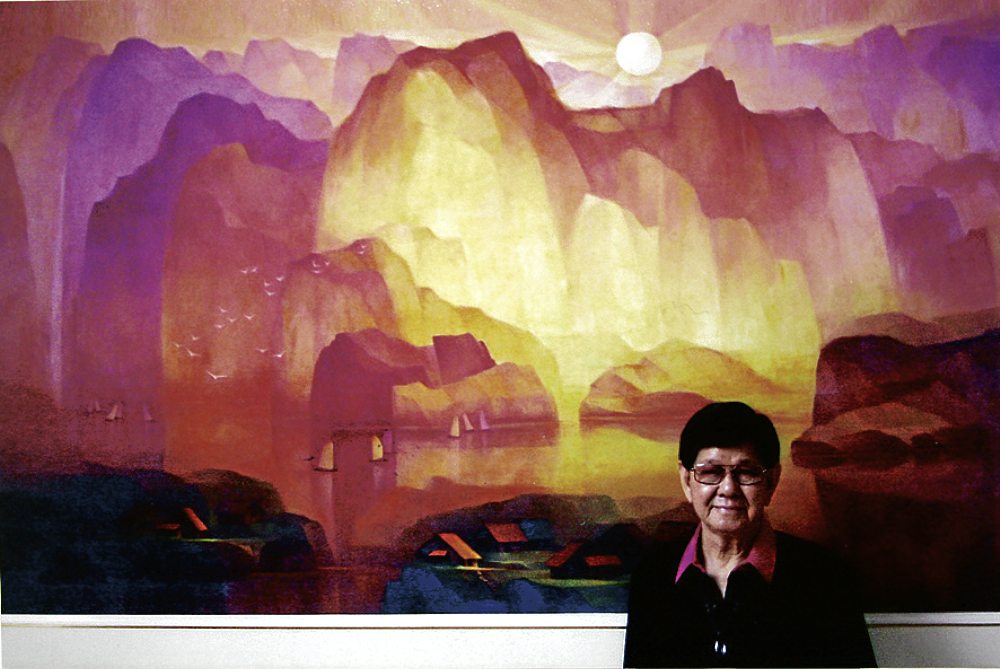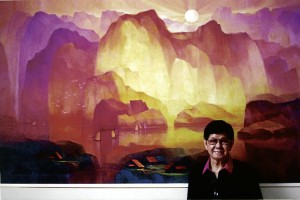
I am always proud to introduce myself as the first child of James Onglepho, the artist.
My father taught me how to appreciate the value and beauty of art. He molded me to be a qualified art collector by guiding me to discover the particular features of an artwork. I grew up in a family immersed in the splendor of arts and culture.
With his busy schedule and the burden of taking care of a growing family, my father still found time to guide me and my siblings to adopt an artistic approach to life. When we were young, we had to earn our allowances by composing artworks.
My father took time to drive us to the mountains or the seaside to appreciate the beauty of nature. We also frequently visited the splendid Pasonanca Park in Zamboanga, the City of Flowers, which was our hometown.
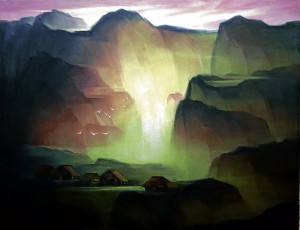
We were told to make sketches of what we saw. After we handed in our drawings, my father would score our work and award us with allowances accordingly. This was how my father trained us to acquire the discipline of life.
Luckily my siblings and I grew and lived up to the expectations of my father. We all accepted art in our lives. I took up Interior Design and graduated from the same school where my father was educated, the University of Santo Tomas. To show my gratitude to my parents, I studied hard and made them proud of me by graduating Bachelor of Fine Arts, cum laude.
Way to perfection
In his long career as an artist, my father has always seen himself as a beginner. He says he is still learning every minute of his life; he takes each day as a new experience.
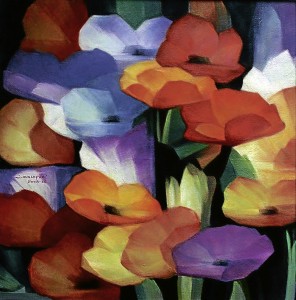
Everyday my father looks for inspiration to paint something new. He considers the creation of art as something spiritual, and adopts the motto, “Practice is the only way to perfection.”
My father has exerted relentless efforts over the past 50 years not only as a professional painter but also as a writer. He has written essays and feature articles which have been published in the United Daily News, the local Chinese newspaper, and in Taiwan magazines.
Despite gaining popularity in the art and literary circles and becoming a prominent figure, my father has always chosen to be low-profile. “It’s nice to be important, but it’s more important to be nice,” he would say.
My father moved to Manila from Zamboanga City with his parents in 1940. He enrolled at Paco Chinese Elementary School, where my grandfather served as principal.
My grandpa passed away in February 1946, and my father moved back to Zamboanga with my grandmother. Grandma was appointed dean of discipline at Zamboanga Chinese High School.
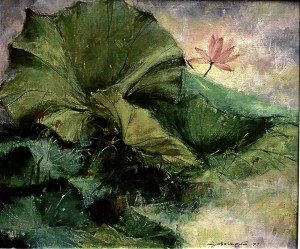
It was during that time and down in the South that my father’s interest in art intensified and he started to paint landscapes.
My father became a teacher of Zamboanga Chinese High School in 1948, and got married in 1951.
Three years later, when I was one year old, my father made a key decision: He left teaching and came to Manila to take up Fine Arts at University of Santo Tomas. At the same time, he took up private lessons in still-life and landscape painting from the renowned artist, Gabriel Custodio.
During my father’s second year in UST, his oil painting “Vista por La Noche” received a special prize at the 5th Shell National Student Painting Competition. My father returned to Zamboanga in 1958, but came back to Manila the next year, with 20 landscape paintings, to put up for his first one-man exhibit at China Art Gallery.
Fascination with lotus
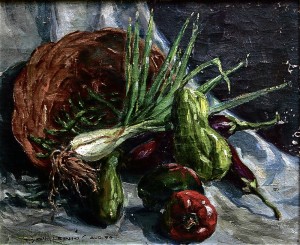
While relaxing at Pasonanca Park in Zamboanga City one Sunday afternoon in 1964, my father glanced at a lotus pond and was fascinated with the flowers. He got the inspiration and started to paint lotus every Sunday.
He would continue to paint lotuses for the next 40 years, and lotus painting has became his trademark.
To him, the lotus is not just a flower; it is the quintessence of purity, as ancient Chinese philosophy puts it. Lotus symbolizes the elegance and nobility of human nature.
His fascination with the lotus has not changed after decades.
“Look at the lotus,” he would tell us, “they grow in the dirtiest ponds full of filthy mud, yet each and every one of them is so clean and pure, completely unaffected by the surrounding environment.

“The ancient Chinese philosopher dubbed lotus as the gentleman among flowers. It is the symbol of purity and refinement in life. Lotus is beautiful in its own way, changing forms and colors, from the budding lotus to a new blossom until it reaches its full bloom and then withers every step of the way.
“It is nice to look at the lotus, but it is even more captivating to paint it. I feel like basking in its beauty while painting the lotus, reaching an emotional climax each time. I choose to paint lotus not because it is a favorite subject matter in Chinese paintings but mainly due to my personal feelings toward the flower.”
My father always says painting the lotus is just like conversing with a close friend. He observes that in Taiwan and China lotuses bloom in the summer months of July and August, but in the Philippines, they are most beautiful during February and March.
Romance with landscape

Landscape painting is another area of concentration of my father’s art.
In the 1950s, while standing on the deck of the ship bringing him back to Zamboanga, he was amazed by the beauty of the mountains. He immediately did some sketches, and that started his romance with landscape painting.
My father had another epiphany when he visited the awesome and inspiring Huang Shan (Yellow Mountain) in China.
“The mountain is like a giant,” he recalls. “It has a nice form and composition from every angle.”
He tries to inject the same qualities into his paintings.
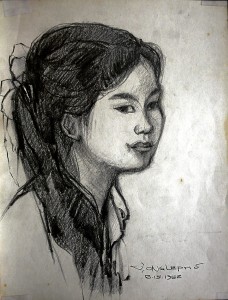
“Every time I paint a landscape, I recall the images of the mountains but then paint my impression,” he says. “A landscape is a state of mind and I paint because I enjoy it. I try to paint the inner beauty of my subject matter and bring out the spirit of union between mankind and nature. In painting a mountain, I am not just painting its surface appearance, but also the abstract feeling of light falling on the mountain.”
In painting landscapes, he is guided by Oriental philosophy, like the ancient Chinese scholar who explained the three spiritual stages in watching a mountain.
The first stage is to watch a mountain as it is. The artist may draw a sketch of the mountain under this circumstance; he may produce a nice painting which shows the realistic beauty of nature, but one that is lifeless and without feeling at all.
According to the Chinese sage, when one reaches the second stage, the observer sees the mountain but it is not a mountain. For an artist who reaches this stage, he will express his own thought in drawing the mountain and it may come out an abstract object.
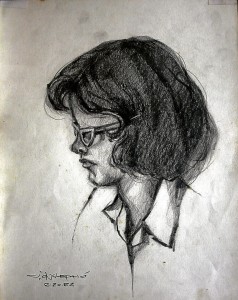
But an artist reaching the third stage will blend his spirit and life with the mountain that he sees. An artist who reaches this stage will immerse himself in the subject matter and come out with an art piece with his own interpretation, showing a different kind of enlightenment.
Color as constant
My father exerts efforts to achieve the third stage of seeing a mountain, resulting in semi-abstract paintings that blend his feelings and sentiments with the essence of the subject matter.
The standard with which to measure a painting, he says, lies in the expression of the artist’s own interpretation of the subject matter, not just the mere representation of it. A painter uses his subjective ideas and emotions to present the subject matter in his unique way.
The result is a figurative work with the effect of abstraction, and an abstract image with a figurative form. “It should not be dissimilar, but it should not have total similarity,” he says.
“Semi-abstraction is the most demanding and by far the most difficult to achieve,” he explains. “It is a matter of carrying the design further in terms of pattern, and color in particular, and yet not to make the original subject unrecognizable. It is halfway between description and abstraction.”
On color, he says: “A painting may have a form or no form at all. It may have lines or no line, but the colors are constant.”
There are two types of color, he says—“the actual natural color and the artist’s emotional color.”
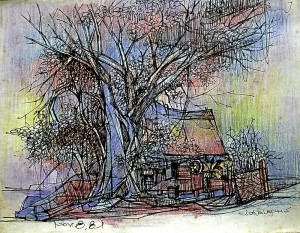
He also thinks ancient Chinese painting developed two major techniques: “the multiple vanishing-point technique, which gives a painting the solid compact composition, where the emotion and thought of the artist are emphasized; and the deformation of the subject matter, which makes way for the realm of creation, and thus giving birth to the technique of exaggeration.”
Visual evocation
His landscape painting has prominent towering mountains which provide vast expanse for visual evocation. His landscapes are not exact representations of nature but infinite reproductions of his imagination. The imposing images of mountains are not based on their original forms and natural colors; they are products of creative planning and choice of color combinations.
He calls them the “color of music and poetry.” He uses the viewpoint of the poet in observing the landscape of the real world. He expresses his own visual language resulting in a “dreamscape,” a vision of perfect artistry.
“To become a successful painter is not fortuitous,” he says. “An artist can find his own way of expressing art only after undergoing soul-searching, intensive training, tough struggling, a lot of developing and changing, and after enduring the experience of painting thousands of art pieces in the process.”
He tells aspiring artists that more important in the shaping of one’s art is the “shaping of the mind.”
“Becoming an artist is a matter of choice, decision and discipline,” he says. “If there is hard work, there will be good harvest.” (“Always be grateful!” is my father’s motto.)
I was born in Zamboanga City in 1952, and moved to Manila after getting married in 1975. In 1990, I migrated to Vancouver, Canada, with my family. Although we have lived far away from my father, my family and I cherish his character and teachings.
He is an artist who exemplifies the spirit of the lotus, pure, humble, strong-willed, optimistic and friendly; he is a true gentleman.
The James Onglepho Retrospective will open at the Art Center of the SM Megamall on Oct. 5, 6 p.m. Larui Cheng and Charles Chamsay are guests of honor. Exhibit will run until Oct. 14.

